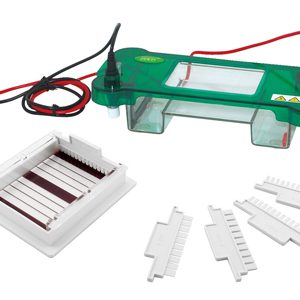If the proportion of red blood pigment and/or red blood cells in the body is too low, there is anemia. The iron-containing protein hemoglobin (Hb) is the most important ingredient in red blood cells and is responsible for the transport of oxygen from the lungs to the cells of the body. From there, Hb carries carbon dioxide, which is produced in cells as a waste product of metabolism, back to the lungs, where it can now be exhaled.
With Hb deficiency, the body’s cells can no longer receive enough oxygen. If anemia occurs as a concomitant symptom of disease, patients may experience different symptoms. For anemia itself, the following complaints are characteristic:
- Dizziness.
- Headache.
- Difficulty breathing during exercise and, if needed, even at rest.
- Decreased mental and physical performance.
- Palpitations.
- Ringing in the ears.
- Pale skin and a smooth red tongue (“hairspray tongue”).
What are the types of anemia?
Anemia can be caused by various situations, and although there are general symptoms, there are also some particular symptoms that depend on the type of anemia. These types of anemias may result from iron deficiency, vitamin B12 deficiency, those due to intestinal bleeding, and hemoglobinopathies. Typical symptoms include the following:
- Iron deficiency anemia, which is due to iron deficiency can also cause brittle nails as well as inflammation of the corners of the mouth and mucous membranes.
- Pernicious anemia (due to lack of vitamin B12), loss of appetite, memory impairment, digestive disorders such as diarrhea or constipation, burning of the tongue, and weight loss may occur.
- Anemia due to internal bleeding manifests as black stools or red blood in stool or urine. Circulatory collapse, low blood pressure, and a high heart rate may occur.
- Hemoglobinopathies, genetic disorders that modify the structure and production of the Hb molecule. They produce the most severe symptoms and the most difficult to treat.
How are hemoglobinopathies studied?
From a molecular point of view, Hb is a tetramer, consisting of two polypeptide globin chains of type α and two of type β. Each of these types of globin chains is covalently attached to a prosthetic oxygen-binding heme. In healthy people, almost 95% of Hb is Hb A (α2β2), with less than 3.2% of Hb A2 (α2δ2) and less than 1% of fetal Hb (Hb F, α2γ2).
Hemoglobin disease refers to a variety of diseases caused by the disruption of this normal pattern of globin gene expression. The disorder is characterized by reduced synthesis of one or more globin chains (thalassemia) or structurally abnormal synthesis of the Hb variant. But these features can be presented simultaneously. Hemoglobinopathies are divided into four main categories related to the severity of the disease and its clinical importance:
- Sickle cell disease (Hb S/S).
- β-thalassaemia syndrome.
- α-thalassaemia syndrome.
- β-thalassemia syndrome, a variant of Hb that causes hemolytic anemia, polycythemia, and rarely cyanosis.
Hematological and biochemical tests provide important clues about the different genetic interactions. The analysis of the hematological parameters of parents, children and other family members allows to know the segregation of the different genes and identify the individual mutations.
In the DNA diagnosis of hemoglobinopathies, carrier screening and detection of mutations constitute the main part of the work. Major hematologic tests include electronic total blood count, electrophoresis, and isoelectric focusing, to name a few. The different hemoglobinopathies can be identified by the different mobility of the different Hb in the electrophoretic profile, so this analysis is a key piece in the diagnosis of this disease.
Electrophoresis kits to help detect anemia
Anemias due to hemoglobinopathies are one of the most complex and serious. It can be detected with an electrophoretic profile by the presence of different Hb proteins characteristic of this disorder. In this sense, the manufacturer Kalstein makes available to bioanalysis laboratories reliable electrophoresis equipment, with sufficient buffer solution for the control of the acidity level, translucent cover to prevent evaporation of the solution and automatic shutdown when the cover is lifted. For more technical details, prices, purchase, quote or review other products in the family, you can check this link HERE

